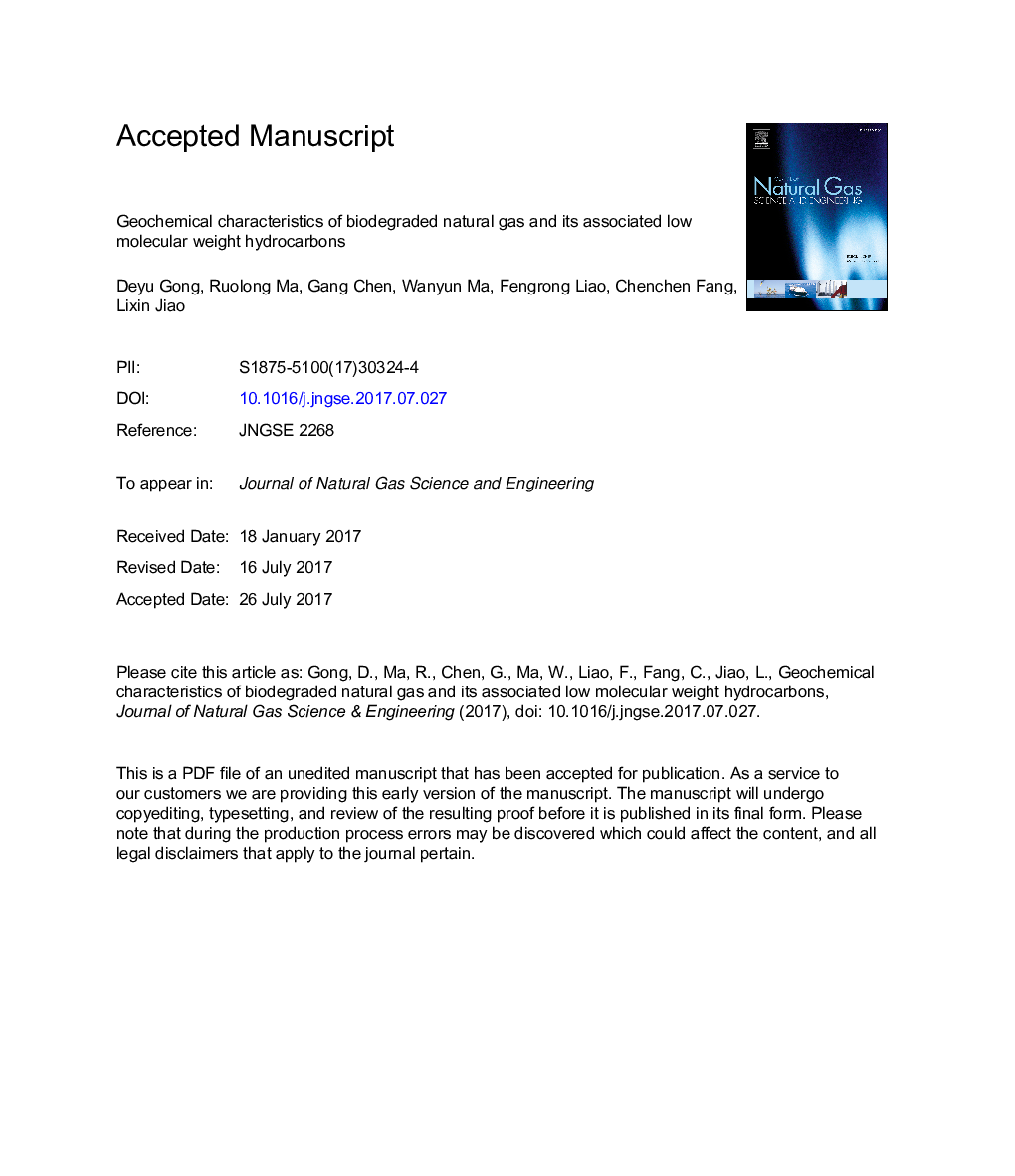| Article ID | Journal | Published Year | Pages | File Type |
|---|---|---|---|---|
| 5484954 | Journal of Natural Gas Science and Engineering | 2017 | 49 Pages |
Abstract
After analyzing the molecular and isotopic compositions of 11 gas samples from Baka Gas Field, as well as the low molecular weight hydrocarbons (LMWHs) associated with them, the two types of natural gases are identified: biodegraded and non-biodegraded gases. No distinctions in molecular and isotopic compositions are observed between biodegraded and non-biodegraded methane, which may be partially due to the great solubility of methane in water. Anomalous molecular compositions and carbon and hydrogen isotopic ratios are observed among the biodegraded C2+ gas components, which become more significantly fractionated in propane than in ethane, most probably due to their selective depletion by different strains of bacteria. The biodegradation resistance for C6-C7 LMWHs associated with gases from Baka Gas Field follow the series Dimethylbutanes > Cyclohexane > Methylcyclopentane > 2-Methylpentane > 3-Methylpentane; Dimethylpentanes, 1,1-Dimethylcyclopentane and 1,2-Dimethylcyclopentanes > Methylcyclohexane >1,3-Dimethylcyclopentanes > 2-Methylhexane > 3-Methylhexane, respectively. Within the identical carbon numbers, two characteristics of biodegradation susceptibility for C6-C7 LMWHs are observed: total poly-branched alkanes are more resistant to biodegradation than cycloalkanes, and mono-branched ones tend to be depleted by bacteria more easily than cycloalkanes; and isomers with adjacent methyl groups tend to be more resistant to biodegradation. These two characteristics could be effective tools for the identification of biodegraded hydrocarbons and for the determination of the degree of bacterial decomposition. After comparison with previous studies, it is evident that the varieties in bacteria strains result in the discrepancy of biodegradation efficiency for certain light hydrocarbon isomers. This research improves the understanding of the geochemical characteristics of biodegraded gases and provides additional tools for the identification of biodegraded gases and their degree of biodegradation.
Related Topics
Physical Sciences and Engineering
Earth and Planetary Sciences
Earth and Planetary Sciences (General)
Authors
Deyu Gong, Ruolong Ma, Gang Chen, Wanyun Ma, Fengrong Liao, Chenchen Fang, Lixin Jiao,
